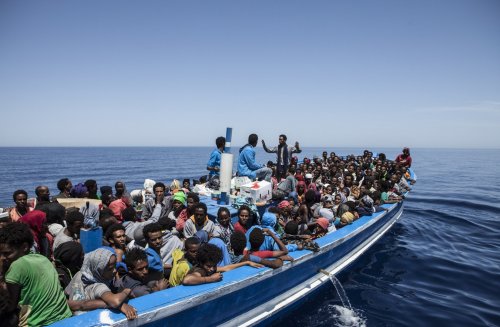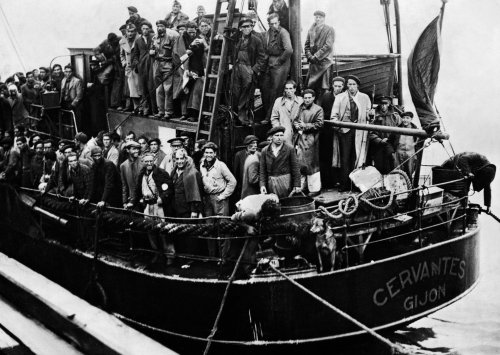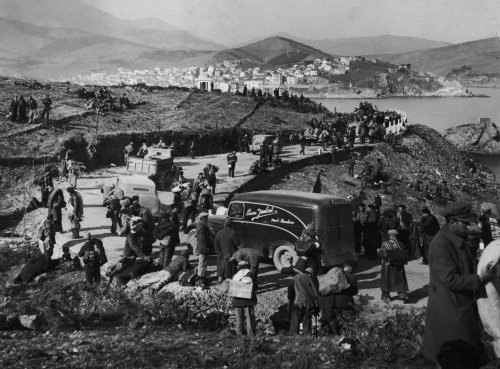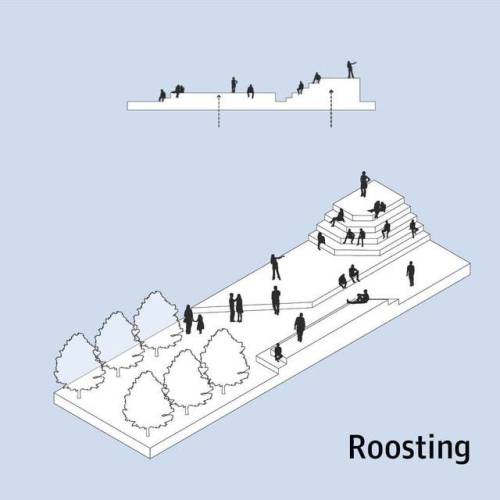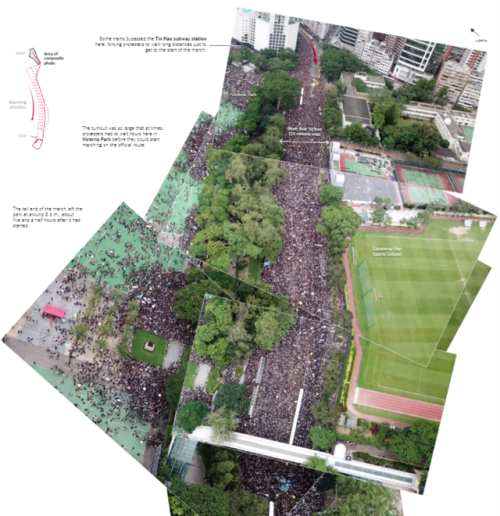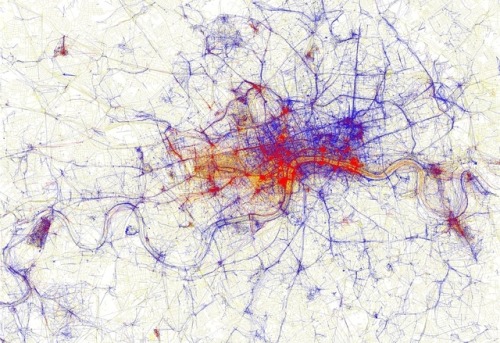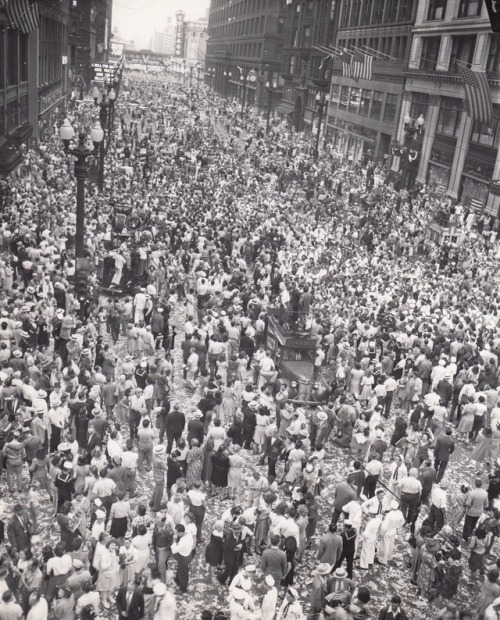#dynamics
Network Structure and Network Dynamics
Creative Networking Course at NYU, ITP
Burak Arikan,Amber Case
It is an introduction to complex networks within the context of the arts. It focuses on understanding the structure and dynamics of large-scale networks and expanding the individual’s thinking about the network as a creative medium.
Post link
Refugees in Europe – then and now | See full gallery
As tens of thousands of refugees continue to make their perilous way across Europe, their pictures recall those of earlier, equally arduous journeys.
From the shattered remains of Dunkirk in 1940 to the smoking ruins of Damascus in 2015, the women and children fleeing the barbarity of German troops in Russia or Islamic State fighters in Iraq, images of humanity’s flight from oppression, poverty and persecution today find a powerful echo in those of past exoduses. For these people, nothing much seems to have changed.
Post link
From lizarding to lingering: how we really behave in public space
The researchers behind The Field Guide to Urban Plazas (published by SWA Group) decided to study the public behaviour of human beings in New York City, an update on William H Whyte’s pioneering work from 1980, The Social Life of Small Urban Spaces. From ‘roosting’ to ‘schooling’, here are the patterns they found.
Source:The Guardian



Post link
A Bird’s-Eye View of How Protesters Have Flooded Hong Kong Streets
Hundreds of thousands of people poured into the streets of Hong Kong on Sunday, June 16, and marched almost two miles (three kilometers), protesting a proposed extradition bill and calling for the city’s leader to step down.
It was the largest of three major protests against the bill that were held over eight days. More demonstrations are scheduled for Wednesday, ahead of the Group of 20 summit meeting in Osaka, Japan. The composite images below help show the enormous scale of the June 16 demonstrations.
Source:The New York Times


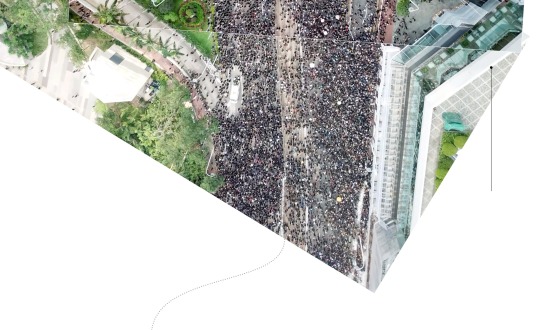

Post link
From Hiroshi Kondo, a mesmerizing short film called Multiverse of the motorbike-jammed streets of Taiwan. Right around the 50 second mark, Kondo starts to use a clever time lapse technique to highlight individuality within the bustling mass of traffic. It’s a really cool effect and reminded me of this clip art animation by Oliver Laric. (via colossal)
Source:Kottke

Post link
A Series of Maps Reveals the Difference in How Cities are Perceived by Tourists and Locals
While visiting a city one has never been to before, it is common to go to touristic places, the ‘must-see’ spots advertised in the media. On the other hand, when establishing residency in a place, it is likely that one will start to attend some less popular locations, and will often spend a long time without passing by the city’s most famous touristic sights. Artist Eric Fischer has developed a project that explores precisely the difference in perceiving - and photographing - a city from the point of view of tourists and locals. The work, which is entitled Locals and Tourists, gathers the maps of 136 of the largest - and most visited - cities in the world.
Fischer used data from MapBox and Twitter to create the maps. The red dots indicate photographs taken by tourists, while the blue dots show images taken by local residents. The data were compiled between 2010 and 2013 and may be somewhat outdated, however, the main tourist attractions in large cities change very little from year to year, so it can be said that the maps reflect fairly accurately the activities of locals and tourists.
For this research, people who have been tweeting from the same city continuously within one month were considered locals. Meanwhile, tourists meant those who were considered locals in a city and tweeted from another location. Check out some of the maps produced by Fischer below and access the full gallery here.
Source:Archdaily
Post link
Dimitris Ballas,Danny Dorling and Benjamin Hennig present figures from their new ‘Social Atlas of Europe’, which provides a new way of illustrating the key social and geographic features across European countries. They argue that by viewing Europe in this way it becomes apparent that most of the real social divides across the continent are within states rather than between them.
On 19 September 1946, Winston Churchill stated that: “we must re-create the European family in a regional structure, called, it may be, the United States of Europe”. This idea of a Europe of Regions and of a European People instead of a Europe of nation-states has long been at the heart of the thinking and efforts that have gradually led to the creation of the European Union. Nevertheless, the recent ascendancy of populist groups and the so-called ‘Eurosceptic earthquake’ in the recent European parliament elections have contributed to the painting of a picture of Europe where Euroscepticism is the dominant trend and where the revival of old nationalisms and divisions is inevitable.
Yet, a closer look at the evidence reveals a much more complex picture, which is convincingly argued by Ruth Wodak in her recent blog. In fact, and despite the significant rise of the votes for Eurosceptic parties, the overwhelming majority of votes and parliament seats were won by parties that are strongly committed to the European project. Perhaps the best example is the triumph of Italy’s centre-left Democratic Party whose leader, the Italian Prime Minister Matteo Renzi, in a speech delivered at the State of the Union before the European elections vowed to push for a United States of Europe during the Italian presidency.
It is also worth noting that according to the most recent Eurobarometer survey in Spring 2014 “close to two-thirds of Europeans feel that they are citizens of the EU (65 per cent of all those polled replying ‘yes’), after a 6 point rise since autumn 2013”. In addition, there is a small but rapidly growing number of formal and informal groups of Europeans (such as New Europeans,Bringing Europeans Together,One EuropeandEustory) who promote and celebrate the idea of a collective European identity and of a “European people” instead of a “nation-state” mentality.
Source:London School of Economics


Post link
The unseen driver behind the migrant caravan: climate change
Photo: Honduran migrants heading to the US, Johan Ordonez/AFP/Getty Images
While violence and poverty have been cited as the reasons for the exodus, experts say the big picture is that changing climate is forcing farmers off their land – and it’s likely to get worse
Thousands of Central American migrants trudging through Mexico towards the US have regularly been described as either fleeing gang violence or extreme poverty.
But another crucial driving factor behind the migrant caravan has been harder to grasp: climate change.
Most members of the migrant caravans come from Guatemala, Honduras and El Salvador – three countries devastated by violence, organised crime and systemic corruption, the roots of which can be traced back to the region’s cold war conflicts.
Experts say that alongside those factors, climate change in the region is exacerbating – and sometimes causing – a miasma of other problems including crop failures and poverty.
And they warn that in the coming decades, it is likely to push millions more people north towards the US.
“The focus on violence is eclipsing the big picture – which is that people are saying they are moving because of some version of food insecurity,” said Robert Albro, a researcher at the Center for Latin American and Latino Studies at American University.
“The main reason people are moving is because they don’t have anything to eat. This has a strong link to climate change – we are seeing tremendous climate instability that is radically changing food security in the region.”
Migrants don’t often specifically mention “climate change” as a motivating factor for leaving because the concept is so abstract and long-term, Albro said. But people in the region who depend on small farms are painfully aware of changes to weather patterns that can ruin crops and decimate incomes. [Full article]
Source:The Guardian
Post link
Want Safer Streets? Take Design Cues From the Snow
Skinnier lanes, longer curbs, and speed humps slow down drivers. But building safer streets usually requires persistent demands from safety-minded citizens, and fistfuls of hard-won tax dollars from authorities. “Traffic calming” strategies rarely happen overnight… unless it’s winter.
Enter the “sneckdown”: When a snowstorm fills up wasted street space with the white stuff, everyone gets a lesson in how to dramatically reduce car speeds. It’s like nature blanketing the city with curb extensions overnight.
TheMuppet-esque portmanteau mashes up “snow” and “neckdown,” an engineering term for a sidewalk extension or street island designed to damper drivers. Snowbanks accumulate on the paved space where people don’t drive or park, revealing “streets we have overbuilt so a car driver can go faster and more recklessly,” according to Clarence Eckerson, the director of video production at STREETFILMS. Imagine if street engineers took a nod from Mother Nature, and repurposed even half of that whited-out space with room for walkers and cyclists—you’d have slower, less dangerous, roads. Sneckdowns are “a very visual way to make the argument,” Eckerson says. [Full article]
Source:Sneckdown Calgary,City Lab


Post link
Your Apps Know Where You Were Last Night, and They’re Not Keeping It Secret
The millions of dots on the map trace highways, side streets and bike trails — each one following the path of an anonymous cellphone user.
One path tracks someone from a home outside Newark to a nearby Planned Parenthood, remaining there for more than an hour. Another represents a person who travels with the mayor of New York during the day and returns to Long Island at night.
Yet another leaves a house in upstate New York at 7 a.m. and travels to a middle school 14 miles away, staying until late afternoon each school day. Only one person makes that trip: Lisa Magrin, a 46-year-old math teacher. Her smartphone goes with her.
An app on the device gathered her location information, which was then sold without her knowledge. It recorded her whereabouts as often as every two seconds, according to a database of more than a million phones in the New York area that was reviewed by The New York Times. While Ms. Magrin’s identity was not disclosed in those records, The Times was able to easily connect her to that dot.
The app tracked her as she went to a Weight Watchers meeting and to her dermatologist’s office for a minor procedure. It followed her hiking with her dog and staying at her ex-boyfriend’s home, information she found disturbing. […]
At least 75 companies receive anonymous, precise location data from apps whose users enable location services to get local news and weather or other information, The Times found. Several of those businesses claim to track up to 200 million mobile devices in the United States — about half those in use last year. The database reviewed by The Times — a sample of information gathered in 2017 and held by one company — reveals people’s travels in startling detail, accurate to within a few yards and in some cases updated more than 14,000 times a day.
These companies sell, use or analyze the data to cater to advertisers, retail outlets and even hedge funds seeking insights into consumer behavior. It’s a hot market, with sales of location-targeted advertising reaching an estimated $21 billion this year. IBM has gotten into the industry, with its purchase of the Weather Channel’s apps. The social network Foursquare remade itself as a location marketing company. Prominent investors in location start-ups include Goldman SachsandPeter Thiel, the PayPal co-founder. [Full article]
Source:The New York Times
Post link
When People Are as Predictable as Water
Image: Start of the 2016 Bank of America Chicago Marathon. Left panel: images after correction from perspective distortion effects. Right panel: Walking speed of the crowd, measured from a PIV analysis. Credit: Nicolas Bain and Denis Bartolo
Can we apply a physics-like reductionism to people? That’s a question we asked Simon DeDeo, a professor of social and decision sciences at Carnegie Mellon University, who also heads the Laboratory for Social Minds at the Santa Fe Institute. DeDeo was well suited to the question. With a background in astrophysics, studying galaxy formation, he’s applied a similar, mathematical approach to both contemporary and historical social phenomena (see his Nautilus feature on shifting attitudes toward violent crime, “When Theft Was Worse Than Murder”).“
One of the bugbears of the social sciences—and the study of groups and the origins and development of civilization—is this notion of human nature,” DeDeo told Nautilus editor in chief Michael Segal. “Since the very beginning of what you might call a ‘science of society,’ people have always gone back to this idea that there are some invariants of human society.” These boil down to a list of biological constants that are able to generate a diversity in human societies that somewhat mirrors galactic variety. “If you’re a physicist, you’re really proud of how little you need to assume to get where you’re going—and I think in the modern era now, in the study of society, of human behavior, we’re beginning to develop a taste for those kinds of explanations that get further with less,” DeDeo said.
It shouldn’t be a surprise, then, to hear that people, moving as a crowd, shift and jostle in ways that render them as predictable as water spilling down a channel. In a paper published in Science this month, two French scientists, Nicolas Bain and Denis Bartolo, modeled marathon runners as they walked up to the starting line of the Chicago Marathon. However, they modeled the runners not as individuals, but as part of a continuous flowing material. “Guided by the spectral properties of velocity waves, we build on conservation laws and symmetry principles to construct a predictive theory of pedestrian flows without resorting to any behavioral assumption,” the authors wrote.
As if taking a cue from DeDeo—getting further with less—Bain and Bartolo eliminated any trace of human characteristics in their model and explained human behavior with a physicist’s precision. From a practical perspective, they concluded, understanding the behavior of crowds in terms of hydrodynamics could help civic planners design more efficient and safe crowd controls.
Post link
Times Square, New Year’s Eve 1937
The complete history behind the famous Times Square Drop Ball
Post link
Summer in the City
1) Oak Street Beach, 1930
2) VJ Day, State Street, August 14, 1945
3) Summer Concert at the Band Shell, Grant Park, 1943
Post link
The prime spiral, also known as Ulam’s spiral, is a plot in which the positive integers are arranged in a spiral with primes indicated in some way along the spiral. Unexpected patterns of diagonal lines are apparent in such a plot. This construction was first made by Polish-American mathematician Stanislaw Ulam (1909-1986) in 1963 while doodling during a boring talk at a scientific meeting. While drawing a grid of lines, he decided to number the intersections according to a spiral pattern, and then began circling the numbers in the spiral that were primes. Surprisingly, the circled primes appeared to fall along a number of diagonal straight lines or, in Ulam’s slightly more formal prose, it “appears to exhibit a strongly nonrandomappearance”
In the above variation of the Ulam spiral, red squares represent prime numbers and white squares represent non-primes. Image source.
Post link




